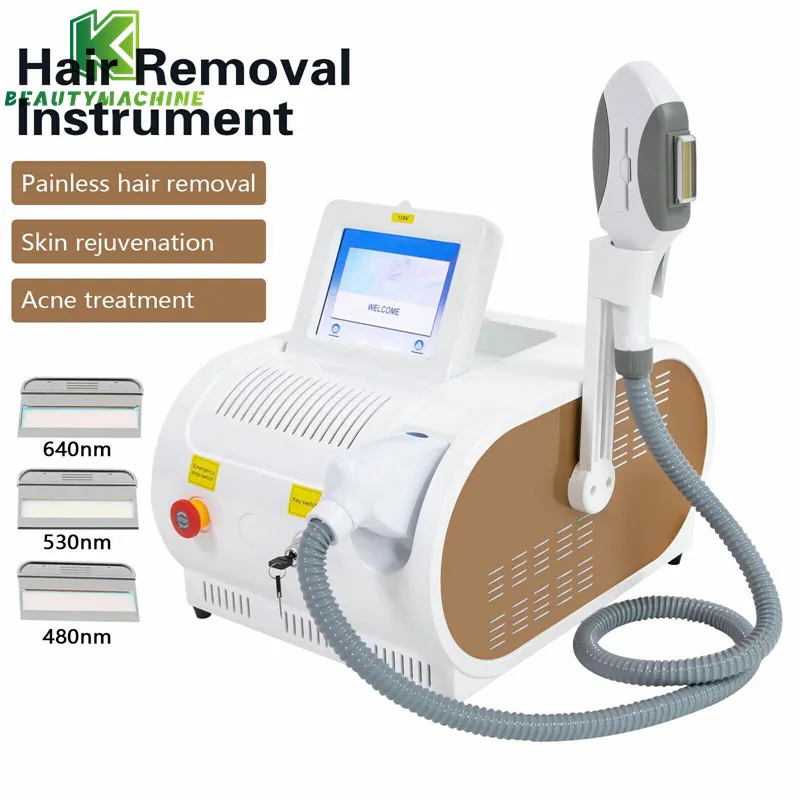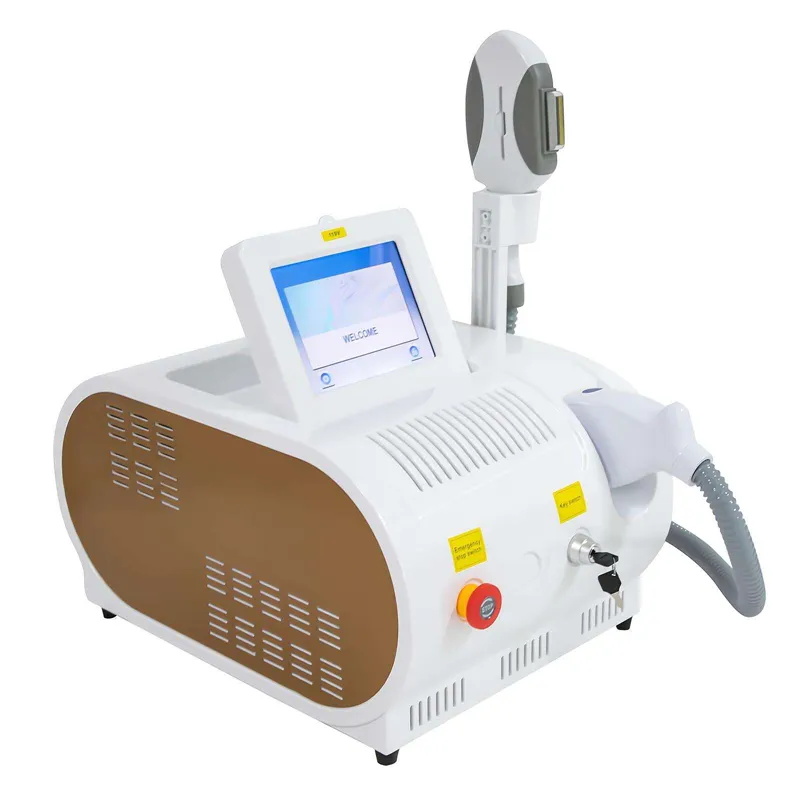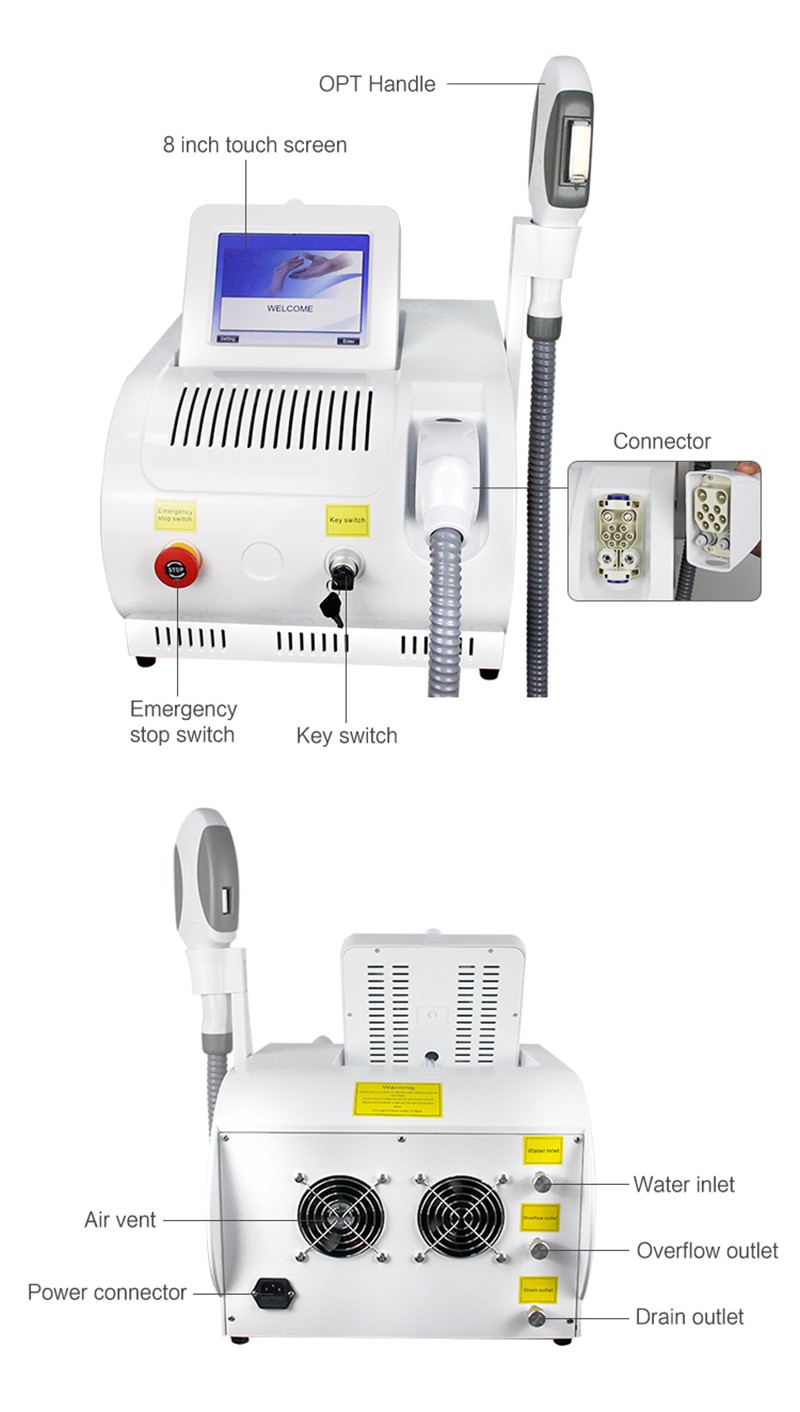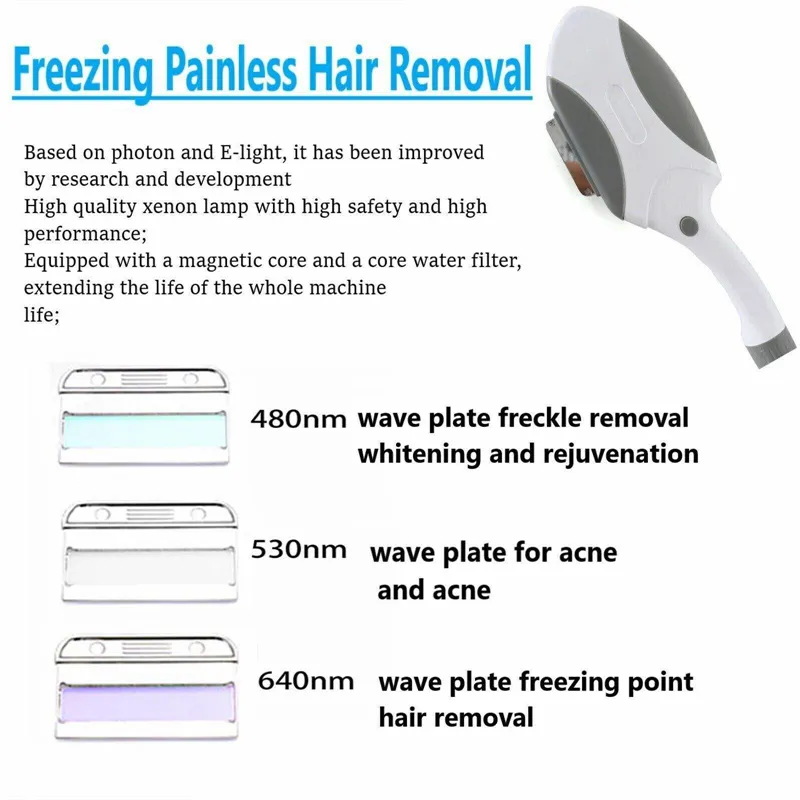
Is ingrown hair common after laser hair removal?
2025-11-18 15:30
In modern aesthetic medicine, laser hair removal machines are the preferred method for removing unwanted hair due to their precision, safety, and long-lasting effects.
They destroy hair follicles through photothermal action, achieving long-term or even permanent hair removal.
However, some people may find small red bumps or faintly visible "curly hairs" under their skin after treatment; this is known as ingrown hair.
So, the question arises—is ingrown hair common after laser hair removal?
Is this a normal phenomenon?
Will it affect the hair removal effect?
And how should it be prevented and cared for?
This article will systematically explain the causes, mechanisms, prevention methods, and proper care of this phenomenon from a medical and dermatological perspective.

What is ingrown hair? Why does it happen?
Ingrown hair refers to newly growing hair that fails to penetrate the skin's surface and grows curled under the skin.
This can lead to:
• Redness, swelling, papules, or pustules;
• Localized stinging or itching;
• In severe cases, even folliculitis.
The formation mechanism typically includes:
• Clogged pores by keratin;
• Abnormal direction of new hair growth;
• Hair trapped under the skin, curling backwards.
Laser hair removal machines themselves do not directly cause ingrown hairs, but because the skin is in a metabolic adjustment phase after treatment, some hair follicles may be temporarily blocked, thus inducing mild ingrown hairs.

How does a laser hair removal machine work?
The core principle of laser hair removal is selective photothermolysis:
• The laser hair removal machine emits a beam of light of a specific wavelength;
• The light energy is absorbed by the melanin within the hair follicle;
• The light energy is converted into heat energy, destroying the hair follicle tissue;
• This causes the hair follicle to lose its ability to grow hair or significantly weaken its ability to do so.
In short, laser treatment doesn't "pluck" hair; instead, it induces apoptosis in the hair follicle, causing the hair to gradually fall out over several days to weeks.
During this process, the hair shaft on the skin's surface undergoes carbonization, loosening, and shedding, and the pores temporarily constrict.
If the pores don't promptly expel keratin or sebum, it can clog the hair follicle opening, leading to ingrown hairs.
Is ingrown hair common after laser hair removal?
The answer is: mild ingrown hairs are a relatively common and temporary reaction after laser hair removal.
Although laser hair removal machines theoretically significantly reduce the risk of ingrown hairs, it can still occur in the following situations:
1. Initial treatment phase (first 1-3 sessions)
After the initial heat damage, the hair follicle enters a repair and metabolic phase, during which the skin may experience temporary blockage.
2. Individuals with thickened stratum corneum
The stratum corneum blocks the hair follicle opening, trapping loosened hairs under the skin.
3. People with curly or coarse hair
Those with naturally curly hair or coarse body hair are more prone to ingrown hairs.
4. Improper post-treatment care
If exfoliation, moisturizing, or cleansing is not performed as required, the risk of clogged pores increases significantly.
It is important to emphasize that laser hair removal machines do not "create" ingrown hairs; on the contrary, they effectively reduce this problem with long-term use.
Some people may experience a transitional reaction during the first treatment, which is a normal skin metabolism process.

The Relationship Between Laser Hair Removal Machines and Ingrown Hairs
The working mechanism of laser hair removal machines and the relationship between ingrown hairs can be understood from the following perspectives:
1. Reducing the Risk of Long-Term Ingrown Hairs
Traditional shaving, plucking, or waxing often leads to hair breakage or damage to hair follicles, thus inducing ingrown hairs.
Laser hair removal machines act directly on the hair follicle root, causing the hair to fall out naturally without forming a break, thus significantly reducing the incidence of long-term ingrown hairs.
2. Temporary pore blockage may occur initially
Within 1-3 weeks after laser treatment, the carbonized hair shaft will gradually emerge from the skin surface.
Some pores may become clogged with sebum or keratin during this process, preventing complete hair removal and creating the appearance of ingrown hairs.
3. Keratin buildup during skin repair
After laser hair removal, the skin enters a mild inflammation and repair phase, slowing down epidermal keratin renewal.
If exfoliation is not performed regularly, clogged pores will increase the risk of ingrown hairs.
Who is more likely to experience ingrown hairs after laser hair removal?
Although laser hair removal machines are generally safe, individual differences can affect skin reactions.
The following groups are more prone to mild ingrown hairs:
Risk Factors | Explanation |
| Oily skin | Excessive sebum secretion easily clogs pores |
| Coarse, thick hair | Hair shafts are more likely to curl back and penetrate the skin |
| Curly hair | Irregular hair growth direction |
| Dry skin or thick stratum corneum | Excessive buildup of keratin narrows the follicle opening |
| Irregular exfoliation | Dead keratin hinders the expulsion of substances from the hair follicle |
| Insufficient moisturizing | Dry, shrinking skin causes pores to become smaller |
Therefore, aftercare and skin management are equally important during laser hair removal treatments.
Why does ingrown hair occur after laser hair removal?
While laser hair removal is intended to prevent ingrown hairs, three main mechanisms can lead to this phenomenon in the initial stages of treatment:
1. Follicle blockage
After laser treatment, the tissue surrounding the hair follicle experiences a mild inflammatory response.
Skin metabolic products (keratin, sebum) temporarily accumulate, causing the hair follicle opening to close, preventing new hair from emerging.
2. Incomplete hair removal
After some hair is destroyed by the laser, the hair shaft becomes fragile but remains inside the follicle.
If the follicle opening is blocked during the hair removal process, the hair shaft will grow in a curl.
3. Excessively dry skin
The skin barrier is slightly damaged after laser hair removal, accelerating moisture evaporation.
Dryness thickens the stratum corneum, indirectly hindering hair from emerging from the skin surface.
These three mechanisms are usually temporary and can be completely resolved with proper aftercare.

What should I do if ingrown hairs appear after laser hair removal?
If you notice small red dots or fine "curls" under your skin after laser hair removal treatment, don't panic.
This is a common short-term reaction and can be alleviated through the following methods:
1. Keep skin clean
Clean the treated area daily with a mild body wash to prevent bacterial growth.
2. Exfoliate moderately
7–10 days after treatment, use a gentle exfoliating product (such as medicated pads or a scrub) to help unclog pores.
3. Enhance moisturizing
Use a moisturizing lotion or aloe vera gel daily after laser hair removal to prevent dryness and shrinkage of the skin.
4. Avoid shaving or plucking
Shaving or plucking can further irritate the skin, causing more severe ingrown hairs and folliculitis.
5. Apply cold compresses or repair gel
If redness and swelling occur, use a cold compress or aloe vera repair gel to soothe the skin.
6. Seek medical attention promptly for severe cases
If ingrown hairs are accompanied by obvious pustules and pain, seek medical attention immediately to prevent the spread of infection.
How to prevent ingrown hairs after laser hair removal?
Prevention is better than cure.
By following these aftercare principles, most people can avoid ingrown hairs after laser hair removal:
• Pre-treatment cleansing and shaving: Before using the laser hair removal machine, be sure to shave off the surface hair, but do not pluck it, to ensure that the laser energy is concentrated on the hair follicle.
• Regular gentle exfoliation: Exfoliate 1-2 times a week to keep pores clear and prevent keratin buildup.
• Keep skin moisturized: After laser treatment, use an alcohol-free, low-irritant moisturizer to help soften and renew the stratum corneum.
• Avoid wearing tight clothing: After laser hair removal, skin is sensitive, and tight clothing may irritate the skin and induce ingrown hairs.
• Choose the appropriate laser hair removal machine and wavelength: Different skin tones and hair types require different wavelengths (such as 755nm, 808nm, or 1064nm) to avoid uneven energy distribution that can cause skin irritation.
• Follow the treatment schedule: Avoid excessively frequent treatments or long intervals between treatments to prevent disruption of the hair follicle cycle.
Will ingrown hairs persist after laser hair removal?
No. They usually resolve on their own within 1-3 weeks after the procedure. As the treatment progresses, the number of hair follicles decreases, significantly reducing the probability of ingrown hairs.
Will ingrown hairs affect the effectiveness of laser hair removal?
No, it won't affect the long-term results. As long as you exfoliate and moisturize regularly, subsequent treatments will still effectively target the hair follicles.
Can I squeeze out the red dots from ingrown hairs?
It's not recommended. Squeezing can cause folliculitis or infection; allow the skin to heal naturally.
Will laser hair removal enlarge pores?
No. On the contrary, as the number of hair follicles decreases, the skin surface will become smoother and finer.
Will exfoliation affect the laser's effectiveness?
Moderate exfoliation can actually help unclog pores, but it should be avoided on the day of treatment or the day after.
Does KuoHai supply to global markets?
Absolutely. KuoHai exports beauty and home appliance products to over 60 countries, including Europe, the Middle East, North America, and Asia. We are a certified China manufacturer with experience in international logistics, customs documentation, and export standards. Global distributors and online resellers can buy wholesale at factory prices and request tailored quotes for large-volume shipments. KuoHai’s goal is to become your long-term global supplier.
Get the latest price? We'll respond as soon as possible(within 12 hours)







